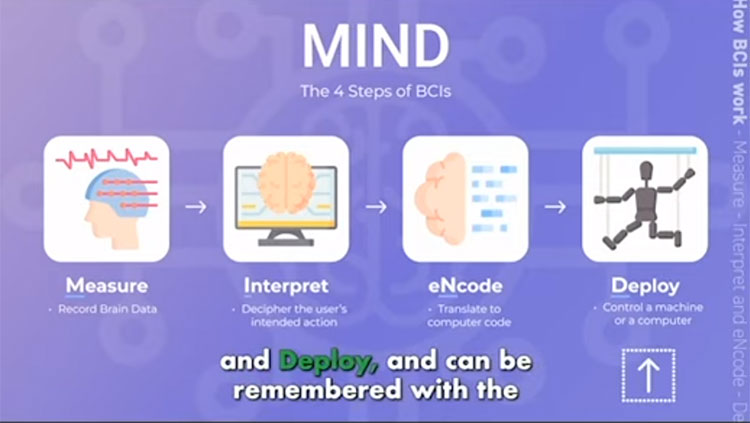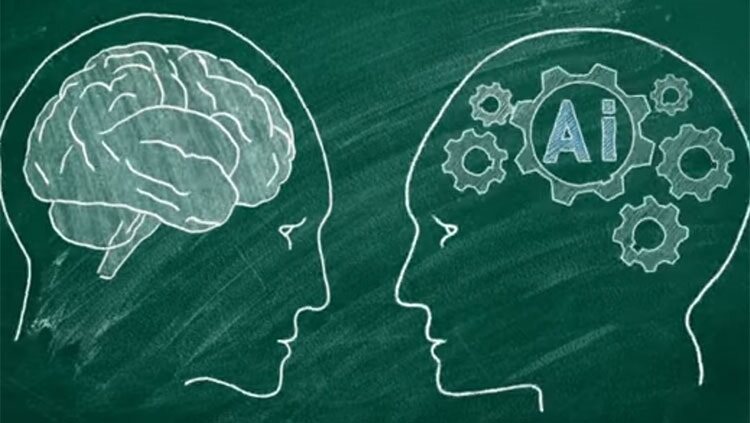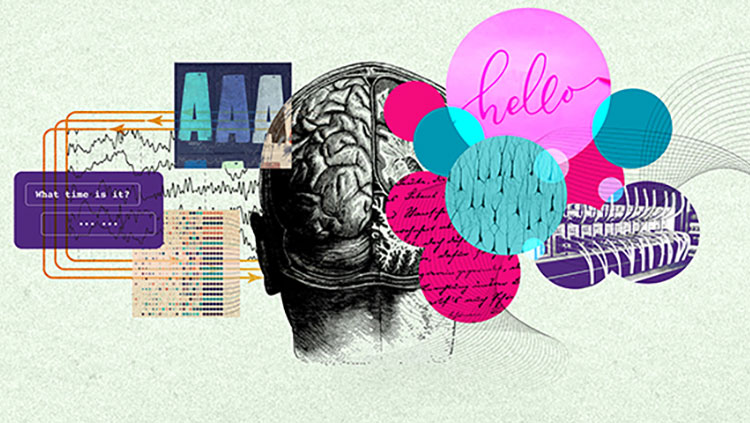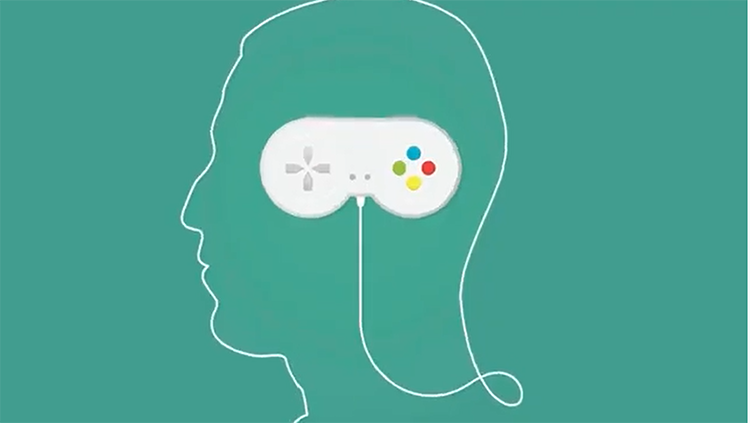This Is Why You Get Zoom Fatigue
- Published23 Sep 2020
- Author Alexis Wnuk
- Source BrainFacts/SfN

I groaned at the incoming text message: “Join our Cloud HD video meeting.” It was a friend inviting me to a virtual movie night. More than six months into the coronavirus pandemic, the novelty of virtual happy hours and virtual movie nights had long worn off. As much as I missed my friends, the thought of watching a movie online together — of unmuting myself to interject what I hoped was witty commentary and then promptly re-muting myself to avoid the audio feedback — was exhausting.
I’m not alone.
“Even when I’m not in professional meetings but just hanging out with my friends and family, I kind of feel like there’s this one-hour mark that I hit where I’m like, ‘I can’t do this anymore,’” says psychologist Adrienne Wood.
It turns out that video chats tax our brain’s attention systems without delivering the same social rewards as face-to-face interactions — leaving us exhausted and dissatisfied.
Focus Fatigue
Group video chats — especially Zoom’s Brady Bunch-like gallery view — present an unusual challenge for our brain’s visual attention system, says Sabine Kastner, a neuroscientist at Princeton University. During in-person conversations, our attention focuses on the person we’re speaking with; everyone else in the room fades into the background. “Whereas in a Zoom meeting, it seems that everybody is always there,” she says. “They are kind of a huge distraction that is not so easy to filter out.”
That’s because our brains process a lot more visual information than we realize. Kastner and colleagues demonstrated this in a series of experiments where they showed people photographs of natural scenes. The images appeared for only 100 milliseconds — less than an eyeblink — yet participants could easily say whether there was a person or car in the image. It shows we can process multiple things at the same time, rather than having to go through each item in a scene one by one, Kastner says.
And, while our visual attention system is tuned to filter out clutter in the environment, people are among the most attention-grabbing stimuli. “We are now basically confronted constantly with this sea of salient stimuli,” she says. We’re “completely overloaded, and that filter function is just not very effective.”
Video chats are a poor substitute for real, face-to-face interaction. A two-dimensional video of a person is nowhere near as attention-grabbing as a real person sitting next to you, Wood says. “I think that’s a huge reason that we find our attention span kind of dwindling when we’re talking to someone on video chat,” she says. “You’re not getting that boost in physiological arousal that keeps you alert.”
That means our brains work harder to maintain concentration throughout the interaction, leading to fatigue. In a 2008 study, doctors who watched lectures via live video feed said they felt more stressed and distracted and had a harder time following the speaker than doctors who attended the lectures in person.
Out of Sync
Our brains are attuned to conversations and social interactions in the real world. Even with a fast internet connection and a crisp display, video chats often have noticeable lags or disconnects between audio and video. This “reduces the fluency of the interaction,” making it harder to process, Wood says.
In a 2011 study, people reported feeling more frustrated during video chats when there was just a one-second delay. And, delays can color our perception — a 2014 study found people perceived the person on the other end of a conference call as less attentive and friendly when there was a 1.2 second delay.
“All of these things — the timing and the rhythm and the synchrony of conversation — are so fine-tuned that if you throw off any of these pieces, it’s just going to feel exhausting,” Wood says.
Signal Interference
Lags and low-resolution also make it harder to pick up nonverbal conversation cues like body language and facial expressions. “A lot of … nonverbal communication is very subtle and quick,” Wood says. For instance, “a quick raise of an eyebrow is all that it takes to communicate confusion.”
While we’re not always aware of these signals, our brains integrate them with what is being said to get a complete read of the conversation.
In her research at the University of Virginia, Wood has found we unconsciously mimic others’ facial expressions during social interactions, which helps us understand what another person is thinking and feeling.
Wood suspects we’re less likely to unconsciously mimic others during video chats — either because it’s too low-resolution to discern others’ expressions or because their emotions are less relevant to us. “If a person looks surprised when they are on video chat 100 miles away, their surprise is not as immediately relevant to me because they might be reacting to something that just happened in their living room,” she says. “Whereas if we are in the same place, every emotion you experience is more relevant to me because it might be signaling something about our shared environment.”
What’s more, the most important body language of all is completely impossible on video chat: eye contact. If you’re in a room with other people, you can tell from their eye movements where their attention is directed. “In a Zoom meeting, I don’t know where they’re looking or what they’re doing at all,” Kastner says.
Normally seamless interactions become stilted on video chat, social signals more difficult to detect, and our visual attention operates at max capacity. For all the cognitive resources we expend, we don’t get the same payoff we normally get from social interactions, Kastner says. “It just leaves me … in this empty space.”
She’s found it helpful to schedule breaks with physical activity and to limit the number of Zoom meetings she has each day. Sometimes, a simple phone call is better. The video doesn’t help the conversation as much as we think it does, she says. “If anything, it’s a huge distraction.”
Wood recommends hiding the self-video display, which can also be a big distraction. For her classes, she tries to mix things up so it’s not a sustained group discussion for a long time. We shouldn’t “expect people’s attention spans to be as long as they would be otherwise,” she says.
CONTENT PROVIDED BY
BrainFacts/SfN
References
Ferran, C., & Watts, S. (2008). Videoconferencing in the Field: A Heuristic Processing Model. Management Science, 54(9), 1565–1578. https://doi.org/10.1287/mnsc.1080.0879
Fosslien, L., & Duffy, M. W. (2020, April 29). How to Combat Zoom Fatigue. Harvard Business Review. https://hbr.org/2020/04/how-to-combat-zoom-fatigue
J. Sears, G., Zhang, H., H. Wiesner, W., D. Hackett, R., & Yuan, Y. (2013). A comparative assessment of videoconference and face-to-face employment interviews. Management Decision, 51(8), 1733–1752. https://doi.org/10.1108/MD-09-2012-0642
Kadaba, L. (2020, May 20). ‘Zoom fatigue’ is real. Why video meetings strain your brain and how to fix it. The Philadelphia Inquirer. https://www.inquirer.com/health/coronavirus/zoom-fatigue-science-brain-how-to-combat-20200520.html
Murphy, K. (2020, April 29). Why Zoom Is Terrible. The New York Times. https://www.nytimes.com/2020/04/29/sunday-review/zoom-video-conference.html
Peelen, M. V., Fei-Fei, L., & Kastner, S. (2009). Neural mechanisms of rapid natural scene categorization in human visual cortex. Nature, 460(7251), 94–97. https://doi.org/10.1038/nature08103
Powers, S. R., Rauh, C., Henning, R. A., Buck, R. W., & West, T. V. (2011). The effect of video feedback delay on frustration and emotion communication accuracy. Computers in Human Behavior, 27(5), 1651–1657. https://doi.org/10.1016/j.chb.2011.02.003
Schoenenberg, K., Raake, A., & Koeppe, J. (2014). Why are you so slow? – Misattribution of transmission delay to attributes of the conversation partner at the far-end. International Journal of Human-Computer Studies, 72(5), 477–487. https://doi.org/10.1016/j.ijhcs.2014.02.004
Wood, A., Lupyan, G., Sherrin, S., & Niedenthal, P. (2016). Altering sensorimotor feedback disrupts visual discrimination of facial expressions. Psychonomic Bulletin & Review, 23(4), 1150–1156. https://doi.org/10.3758/s13423-015-0974-5
Wood, A., Rychlowska, M., Korb, S., & Niedenthal, P. (2016). Fashioning the Face: Sensorimotor Simulation Contributes to Facial Expression Recognition. Trends in Cognitive Sciences, 20(3), 227–240. https://doi.org/10.1016/j.tics.2015.12.010
Zoom fatigue is real—Here’s why video calls are so draining. (2020, May 19). Ideas.Ted.Com. https://ideas.ted.com/zoom-fatigue-is-real-heres-why-video-calls-are-so-draining/


















